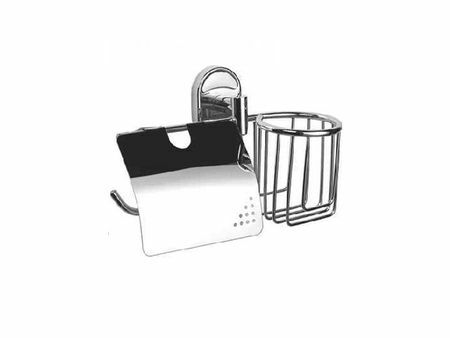Beautiful garden - it is neat tracksAnd flowering slope, and clean pond. All of this will please your eyes and be a source of pride if it really look decent. But practice shows that with time the track crawl and overgrown with weeds, pond shore gutter and slope deformed and crumble. All this can be avoided by using just a modern adaptation. The theme of this material from HouseShief.ru - what is needed geogrid, and how to use it properly.

Read article
- 1 What is it, geogrid, and why it is needed
- 2 Varieties of geogrids and geogrid
- 2.1 What is the volume type geogrid
- 2.2 Flat lattice or geogrids
- 3 How to choose the anchor for attaching geogrid
- 4 Nuances slope reinforcing polymer geogrid
- 4.1 The technology of using volumetric geogrid for slope reinforcing
- 4.2 How to Put geogrids to reinforce the slope
- 5 Consolidation reservoirs geogrid
- 6 As geogrid reinforces parking
- 7 Based on sidewalks of geogrids
- 8 How much is a geogrid
What is it, geogrid, and why it is needed
The search for ways to strengthen the soil brought developers to the idea of creating a polymer network, which would be held securely in any surface. So there geogrids and geogrid. Externally, the material looks like a honeycomb structure made of plastic polymeric tapes approximately 1.5 mm thick.

The void is filled geogrid soil, gravel or sand. The use of this innovative material has many advantages:
- all landscape design using geogrids have a long life;
- polymeric material eco-friendly and does not interfere with the normal development of garden plants;
- Garden arrangement using such nets requires no special skills, all the work can be done even alone;
- the cost of creating garden designs with this material are low.

Varieties of geogrids and geogrid
Polymer cellular coverage is produced in two main forms: it can be flat or three-dimensional. Already from the name it is clear how they differ.
Please note that the geogrid can be made not only plastic, but also from concrete or geo. Concrete is usually used at construction sites of large size, but the geo - on the contrary, the least durable of all existing species.

What is the volume type geogrid
Three-dimensional lattice is made of polypropylene, polyethylene and polyester. Any of these materials is strong enough and flexible, and in addition, different resistance to aggressive external influences.
Volume grating is used to solve many difficult tasks:
- erosion control;
- fixing crumbling slope;
- reduce the load level on the roadbed;
- consolidation of embankments and other structures from the ground.
Volumetric geogrid can be made of a continuous tape or be perforated. Perforation is done by stamping. Perforated geogrids perfectly absorb moisture and will be invaluable in the areas affected by heavy rainfall.

Among the advantages of perforated geogrids should also note a good coupling with the ground, such that enables to strengthen the steep slopes more than 30 °. Thanks to the perforation, decorated high volumetric grid flower beds passing excess moisture.
Note! polymer lattice tape bonded by ultrasonic welding. It gives exceptional strong connection, for high performance and long-term active operation.
Flat lattice or geogrids
The polymeric geogrid - versatile material that is used for reinforcing pavement. It works much the same way as fittingsStrengthening various types of flood and bulk layers. The base is made from different polymers.
Polyester is used for asphalt concrete. It increases the strength of the coating and prolongs its service life up to half a century.

They can be used for the construction of railway embankments and industrial facilities. These nets - an integral part of the pavement of the new generation.

How to choose the anchor for attaching geogrid
To fix the geogrid in the ground using special types of fasteners - Special anchor. They are L-shaped and T-shaped and made of steel or plastic.

The anchors are placed in a special pattern contour geogrid so that the material is stretched in the right direction. After fixing the grille is filled with soil or gravel and the mounting portion mounts extracted. They can be used again.
Tip! To mount for geogrid easily removed from the soil, to his tie anchor cord.
The most reliable fasteners for fixing the considered T-anchor. They firmly fix all of the geogrid.
Nuances slope reinforcing polymer geogrid
If you got a site with a slope, it must to be strengthened, or eventually the soil will be washed away by rain. There are several solutions to the problem. You can fix the slope, landed on his trees and shrubs. Roots Firmly attach the ground. If you do not want to strengthen the green, you can use stone or wooden fencesThat will stop shedding. And finally, you can use the geogrid laying on slopes.

Tip! To avoid the destruction of topsoil on the slopes, fortified geogrid, plants should be watered at it from top to bottom.
The technology of using volumetric geogrid for slope reinforcing
Grid can be laid directly on the ground or on geotextile layer.

A small installation instructions geogrid on the slope:
- to align the soil, remove the weeds roots and compacted earth;
- followed geotextile stretches when it is needed;
- grille fixed anchors, or at least with wooden pegs;
- coating cells are filled with soil, sand or stones.
If you are planning to grow on the slope of the lawn or flowers, seeds are sown directly into the ground in the honeycomb.
In the photo - examples of using geogrids to reinforce the slopes:




How to Put geogrids to reinforce the slope
The principle of using geogrids about the same as the geogrid. Only geogrid is advisable to use if you plan to fix the slope pouring concrete or something similar.

Another interesting option to strengthen the slope - to place bags of geogrids, filled with stones or soil on one another on the slope.
Consolidation reservoirs geogrid
Pond - it is, of course, decoration section. It will delight you all year round, of course, provided that the pond will look well-groomed. Around the pond can be planted flowers and shrubs, install a small artificial waterfall.

Geogrid for pond - an important aspect in the design of the pond. Before you take the job, do a little research and answer some important questions:
What part of the coast of the soil?
What is the size and slope of the ramps?
Where the ground is crumbling: only from the shore or under water too?

laying geogrid technology on the shores and slopes in general the same. Only the shore of the reservoir better pour pebbles or marble chips.
We suggest you familiarize yourself with a video installation of geogrid:
As geogrid reinforces parking
If you put the car in the yard, then over time at the site of entry appears track, and in the rainy weeks there altogether formed a dirty mess. Will help solve the problem is still the same geogrid. It will fix the pebbled and the soil will not fall apart and go into the ground, as the geogrid ribs significantly reduce pressure on him from the wheels of the car.
Note! Polymeric materials geogrid are not afraid of contact with motor oil and other industrial fluids.

Geogrid in this case to preserve the roots grass the pressure and the entry will be long please you with fresh herbs. If you have not considered this idea, note that this type of parking is already decorated with many hotels and restaurants.
Based on sidewalks of geogrids
What is the main problem garden paths? Whatever you do not made out, they spread out and become misshapen over time. The only exceptions are concrete instances, but not everyone wants to have such a garden. Geogrid firmly fix any posypku. And why not use in this case, for example, colored gravel or wood chips? Bit troublesome, but very original posypku will use different colors.

If placed under the grille cloth, weeds will grow and your track is here to stay bright and neat. You can find in the sale of special geogrid for garden paths. Product price per meter - from 50 rubles.
How much is a geogrid
As already mentioned, geogrid - an inexpensive material. Its value depends on the cell size, density, material and the presence of perforations. The cheapest - solid lattice, it costs 30 rubles per square meters. Price high density perforated material may be up to 300 rubles. Geogrid will cost you about 50-120 rubles per m².

As you can see, the price is low, and the effect of the use of this material is simply amazing. If you have already used the geogrid on your site, share your impressions in the comments!


